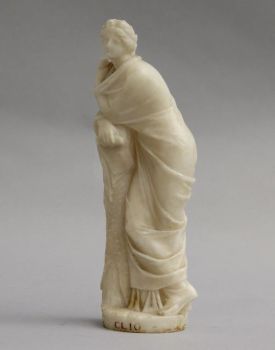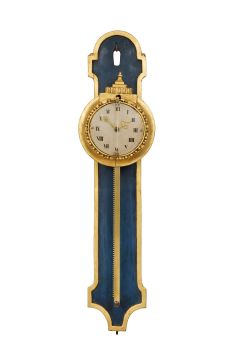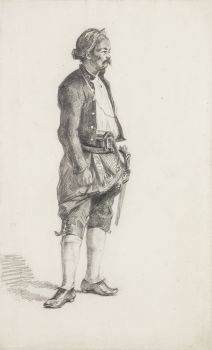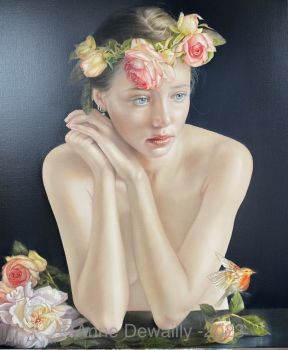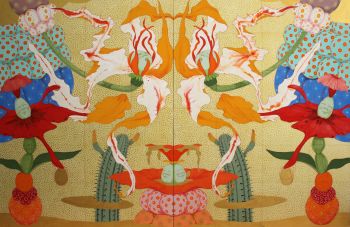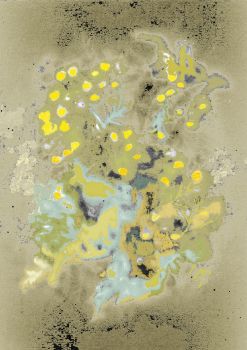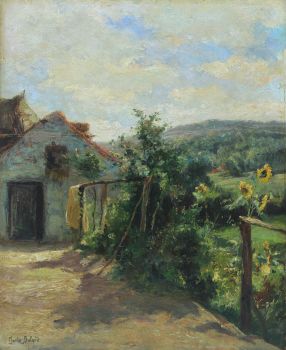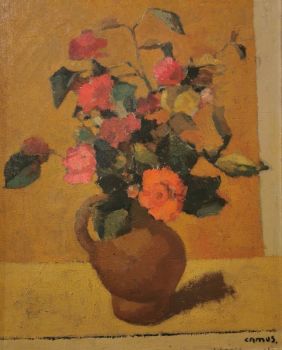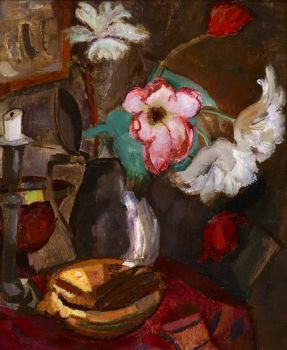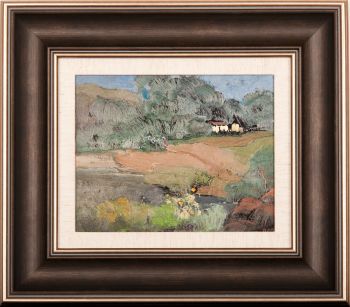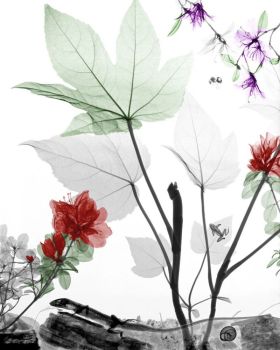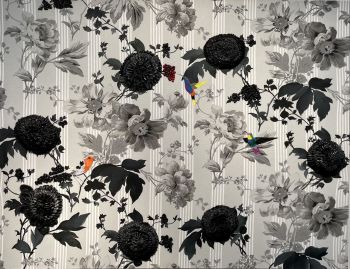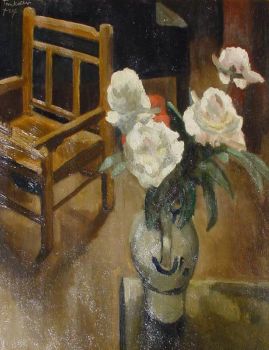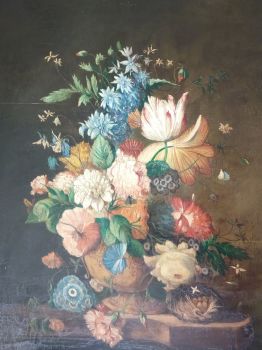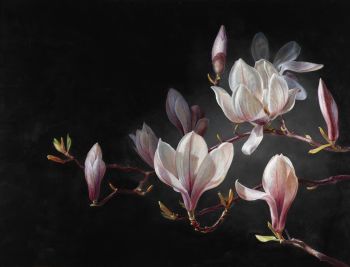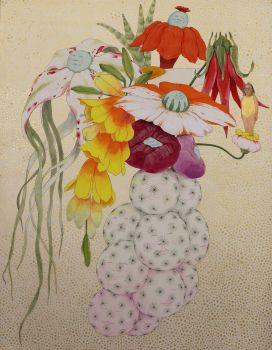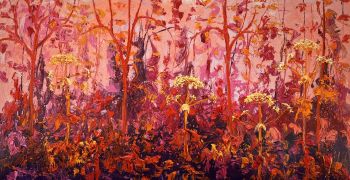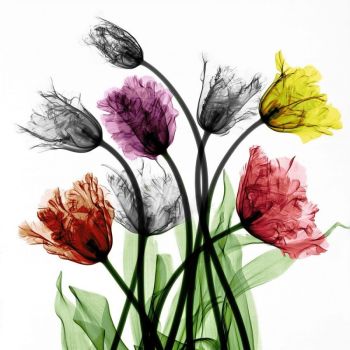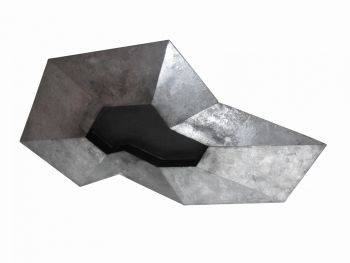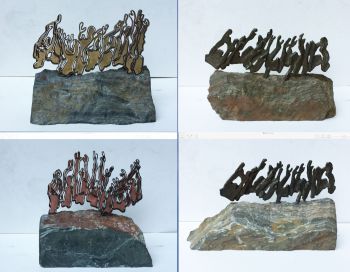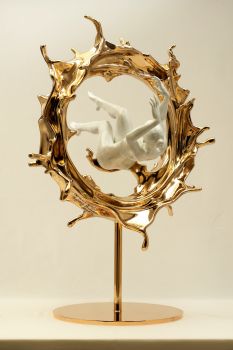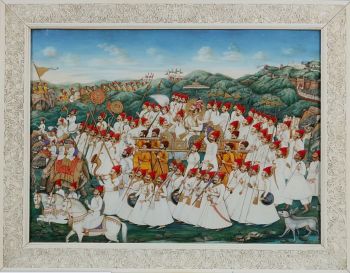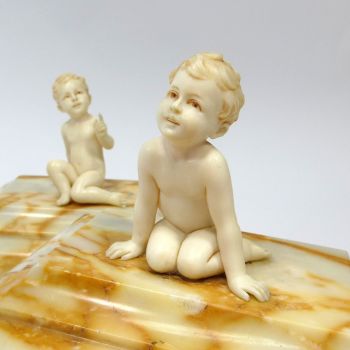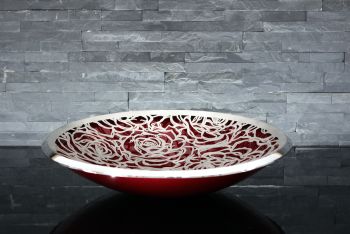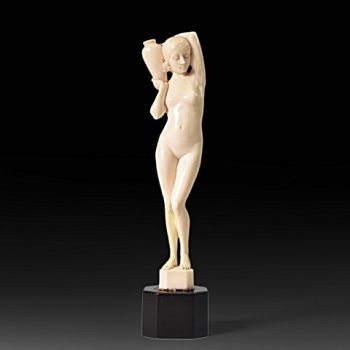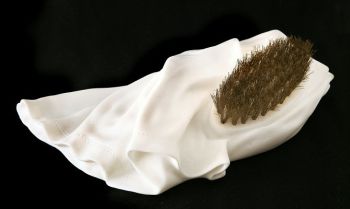Indian colonial inlaid work box, 18th century 1700 - 1750
Artiste Inconnu
OSBoisIvoireMétalLaiton
33 ⨯ 48 ⨯ 12 cm
ConditionGood
€ 3.500
Verkoulen Oriental & European Antiques
- Sur l'oeuvre d'artAn exotic (Anglo-)Indian work box made of rosewood and ebony with ivory inlaid floral motifs, 18th century, around 1700-1750, Vizagapatam, India.
Dimensions: 32,5 x 47,5 x 12 cm.
This larger document or work box is an example of typical early 18th century craftmanship influenced by the Europeans but also the Indian taste and culture. The brownish with darker veining rosewood is considered as a precious hardwood and perfect to withstand the warm and moistures climate of the Indian ocean region and Indonesian archipelago. The ivory is etched and filled with black lacquer to form a shade on the flower buds. The ‘scrolling vines’ created out of black leaves and stems of the flower are inlaid with ebony wood. The top lid had four studded floral rosettes, and the sides of the box have brass handles. The front is also provided with an elegant brass lock plate and a key. On the inside we can find several compartments to store writing materials.
Vizagapatam was a fundamental center for production of luxurious objects exported to Europe and other ports. It was a part of Madras Presidency (the administrative divisions of Madras, province of British India with St. George fort) from the 17th century till the independence in 1947. The first written reference to ivory inlayed furniture in Vizagapatam was made in 1756 by Major John Corneille, who noted that the area was known for the quality of its Chintz (processed fabric), which is “esteemed the best in India for the brightness of its colours”, and that "the place is likewise remarkable for its inlay work, and justly for they do it to the greatest perfection". The British East India Company had a textile factory in Vizagapatam from 1668. Eventually by 1768 the British gained control over the whole area. It was a tradition in Vizagapatam to manufacture furniture in Western style, using ivory etched with lacquer inlaid into wood. The decoration they used in Vizagapatam was inspired from the Mughal culture. Even though the British had control over Vizagapatam and other regions, objects produced in Vizagapatam during the 18th century were also made for company officials from Holland as wel as the European market.
Condition: Good, some wear to the inlay work.
For a similar example mounted on a later stand, see: Christie's 17 February 2016, Live auction 12033, lot nr. 267.
NOTE: Please note that the shipping time takes longer for this object, because the need of CITES-Documents for export! - Sur l'artiste
Il peut arriver qu'un artiste ou un créateur soit inconnu.
Certaines œuvres ne doivent pas être déterminées par qui elles sont faites ou elles sont faites par (un groupe d') artisans. Les exemples sont des statues de l'Antiquité, des meubles, des miroirs ou des signatures qui ne sont pas claires ou lisibles, mais aussi certaines œuvres ne sont pas signées du tout.
Vous pouvez également trouver la description suivante :
•"Attribué à …." A leur avis probablement une oeuvre de l'artiste, au moins en partie
•« Atelier de …. ou « Atelier de » À leur avis, une œuvre exécutée dans l'atelier ou l'atelier de l'artiste, éventuellement sous sa direction
•« Cercle de… ». A leur avis une oeuvre de la période de l'artiste témoignant de son influence, étroitement associée à l'artiste mais pas forcément son élève
•« Style de … ». ou "Suiveur de ...." Selon eux, une œuvre exécutée dans le style de l'artiste mais pas nécessairement par un élève ; peut être contemporain ou presque contemporain
•« Manière de… ». A leur avis une oeuvre dans le style de l'artiste mais d'une date plus tardive
•"Après …." A leur avis une copie (quelle qu'en soit la date) d'une oeuvre de l'artiste
•« Signé… », « Daté… ». ou « Inscrit » À leur avis, l'œuvre a été signée/datée/inscrite par l'artiste. L'ajout d'un point d'interrogation indique un élément de doute
• "Avec signature ….", "Avec date ….", "Avec inscription …." ou "Porte signature/date/inscription" à leur avis la signature/date/inscription a été ajoutée par quelqu'un d'autre que l'artiste
Êtes-vous intéressé par l'achat de cette oeuvre?
Artwork details
Related artworks
Artiste Inconnu
Deux portraits d'étude du Mas Marco Kartodikromo1900 - 1950
Prix sur demandeZebregs & Röell - Fine Art - Antiques
1 - 4 / 12Artiste Inconnu
A silver spoon commemorating Juff’ Margareta van Hoorn1656 - 1694
Prix sur demandeZebregs & Röell - Fine Art - Antiques
Paulus Franciscus Kromjong
Fleurs devant Arearea Aka (joie) par Gauguin '20th century
Prix sur demandeZebregs & Röell - Fine Art - Antiques
Artiste Inconnu
A Surinam-themed Amsterdam long-case clock1746 - 1756
Prix sur demandeZebregs & Röell - Fine Art - Antiques
 Sélectionné par
Sélectionné parGallerease Magazine
Artiste Inconnu
UN PLAT EN ARGENT LOBBED INDONÉSIEN INSOLITElate 17th
Prix sur demandeZebregs & Röell - Fine Art - Antiques
1 - 4 / 24Artiste Inconnu
UNE COLLECTION DE QUATRE BOÎTES À BIBLE EN IVOIRE SRI LANKAN18th century
Prix sur demandeZebregs & Röell - Fine Art - Antiques
Artiste Inconnu
The Stamford Raffles Secretaires.1800 - 1813
Prix sur demandeZebregs & Röell - Fine Art - Antiques
Artiste Inconnu
UN FILET D'IVOIRE D'UN DUTCHMAN TENANT UN COCKEREL18th century
Prix sur demandeZebregs & Röell - Fine Art - Antiques
Artiste Inconnu
UN RARE GRAND TÉLESCOPE EN CUIR LAQUÉ JAPONAIS1750 - 1800
Prix sur demandeZebregs & Röell - Fine Art - Antiques
1 - 4 / 24Johannes van Dreght
Antique Dutch still life flowers in vase1740 - 1800
Prix sur demandeGallerease Selected
 Sélectionné par
Sélectionné parDanny Bree
1 - 4 / 24Artiste Inconnu
GRANDE PEINTURE INDIENNE IMPORTANTE ET RARE `` STYLE D'ENTREPRISE '' SUR IVOIRE REPRÉSENTANT UN DÉFI1850 - 1900
Prix sur demandeZebregs & Röell - Fine Art - Antiques
 Sélectionné par
Sélectionné parDanny Bree
Artiste Inconnu
UN FILET D'IVOIRE D'UN DUTCHMAN TENANT UN COCKEREL18th century
Prix sur demandeZebregs & Röell - Fine Art - Antiques
1 - 4 / 24- 1 - 4 / 8








